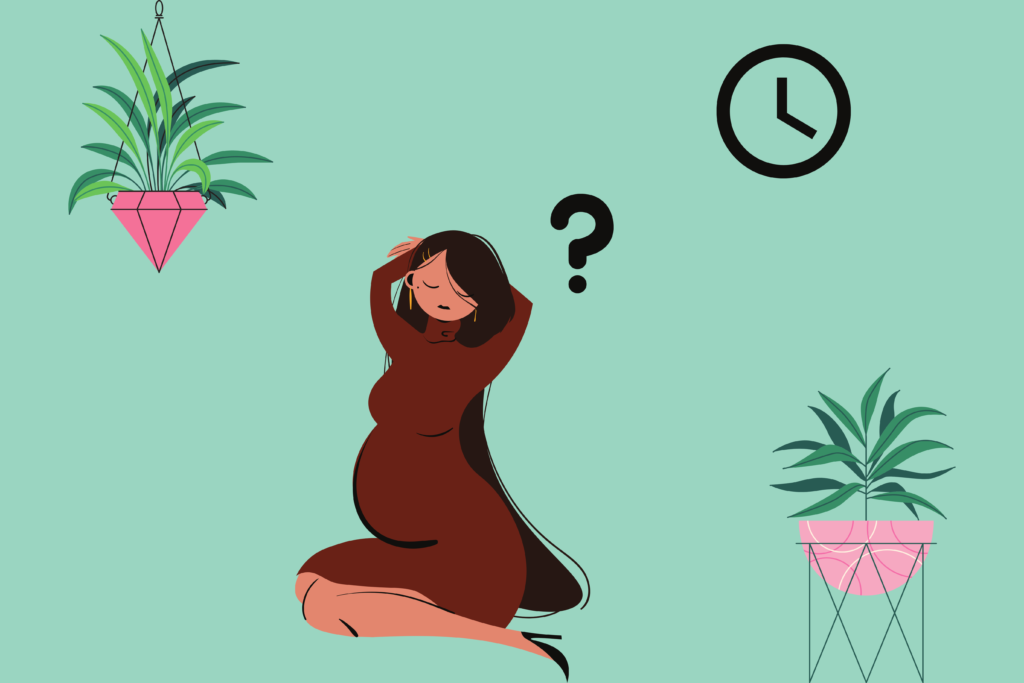Have you ever wondered what the course you followed was good for? I had this with a course that I was taking during my study. It was an interesting course on science, media, and society, but I never expected to do something with the knowledge I gained. Until now. The course was specifically focusing on how medical knowledge was presented in the mainstream media e.g., on talk shows and in media articles with headlines, such as ‘Red Wine Makes You Live Longer’ or ‘Eating Fish Makes You Smarter’. I had to compare a media article with the medical paper that was cited in the article. I found that in the media article medical findings were often distorted, other important findings were discarded, and sampling methods were not mentioned. This is alarming when it comes down to influencing people’s beliefs about medical issues, such as the biological clock.
When did the discussions on the biological clock for women start?
Ever since women joined the workforce in the 1970s, there has been increasing attention for gendered debates on aging and female reproduction and demographic shifts toward delayed parenting that culminate in discourses on the “biological clock.”[1] Central to the biological clock discourse is that the public debate is overshadowed by the notion that paid labour hinders and competes with a woman’s fertile years. By the 1980s, the biological clock was stereotypically associated with a cohort of largely Caucasian, educated, upper-middle-class women.[2] With the advent of medical technologies and techniques, large numbers of women voluntarily postponed childbearing. As a result, in the late 1990s, a generation of women who had waited to start a family was beginning to struggle with that decision, as one media outlet after another was covering the sharp decline in women’s fertility with age. The mainstream media was full of headlines, such as “When It’s Too Late to Have a Baby”, “Should You Have Your Baby Now?”, “Tick-Tock Goes The Biological Clock.”
Where do we stand now?
The first articles on the biological clock for women were based on historical data before the introduction of medical technologies and techniques, such as birth control and IVF. Since the early 2000s, many studies have been published on pregnancy at a later age. There is a wide belief in the medical field that indeed age and fertility levels are correlated. As the age of women goes up, the fertility levels decline. However, the speed with which that is declining is debatable. For example, a study by David Dunson (2004) found that with sexual intercourse at least twice a week results in 82 percent of 35-to-39 old women conceive within a year compared with 86 percent of 27-to-34-olds. [3] That is only a drop of 4 percent. A percentage of 43-63 % were able to conceive after an additional 12 cycles of trying. Dunson (2004) also found that fertility decreases with the age of both men and women. Another study, by Kenneth Rothman (2013), followed 2,820 Danish women as they tried to get pregnant. [4] Among women having sex during their fertile times, 78 percent of 35-to-40-year-olds got pregnant within a year, compared with 84 percent of 20-to-34-year-olds. That is a drop of 6 percent. A study headed by Anne Steiner, found that among 38-39 year-olds who had been pregnant before, 80 percent of white women of normal weight got pregnant naturally within six months. This percentage was lower among other races and among the overweight.[5] In her data, she did not see huge drops until the age of 40. Thus, over the past years, many studies have found that conceiving at a later age is not as gloomy as was previously assumed. A trend in conducting research on the biological clock for men can also be observed.
Measurability Issues
Studies of natural conception are difficult to conduct. Firstly, many women give birth in their twenties and use birth control in their thirties, or they have been using birth control in their twenties and this can impact their fertility levels at a later stage. Secondly, one of the challenges for researchers is always finding respondents and relying on information provided by the couple on how long it took them to conceive is highly unreliable. Another problem is that fertility levels are possibly also influenced by other factors, such as nutrition, stress-levels, socio-economic position, and ethnicity. This almost changes per decade. Take nutrition for example, with the vegan trend that is happening, people eat less meat. Lastly, many studies take white women as samples. This is problematic for non-white women, because it does not say anything about to what extent the findings are applicable to them.
Summarising what we know
- Fertility declines as age goes up for both women and men
- More research is conducted on the biological clock for men
- Conceiving levels of women who are in their 20s and 30s only differ by 4-6 percent
- A percentage of 43-63 % of the couples was able to conceive within the second year of trying
- Women who have been pregnant before, have higher chances of getting pregnant again at a later age
- Measuring natural conception is difficult
- Sample Representativeness is lacking
Concluding Words
Prior to writing this blogpost, I asked my followers (women only) on Instagram whether they have heard of the term ‘biological clock’ before. All women have heard of the term before. I also asked them whether they are concerned about being able to conceive, because of the biological clock. Most women said no, but I have to say that this was almost fifty-fifty. Thus, there are many women who do get concerned about becoming less fertile as their age goes up. I get where this comes from, because if you hear a message frequently, you start to believe it. However, I also want to point out that the medical knowledge that we have on this topic is limited unless you are part of the medical field. The closest that I get to the medical field is when I go to the dentist twice a year and to the GP for my iron and vitamin D check-up. Most people barely take the time to read medical journals on fertility and delve into the questions of how was this research conducted, what were the findings, what are the sampling errors? This is the reason why I find it disturbing that medical topics in the mainstream media get covered in sensational way.
Mainstream media outlets have one goal: attracting many viewers or readers because they have a product to sell. Discussing medical topics in a sensational way without an expert, can have far-reaching consequences for the beliefs of people and the decisions that they make. That is why you should always be critical about what you let in, because headlines, such as ‘when it’s too late to have a baby’ only instil fear. When you start reading medical journals, you will discover the complexity of this topic. After reading medical articles, I believe that fertility decreases as we age, but I also believe that this different for every woman. I have read stories of women who gave birth to healthy children after the age of 35 or even at the age of 42. If you are concerned about whether you can have children, I recommend reading medical journals and visiting the GP. Don’t jump to conclusions based on what you hear and read in the mainstream media.
[1] Friese, C., Becker, G., & Nachtigall, R. D. (2006). Rethinking the biological clock: eleventh-hour moms, miracle moms and meanings of age-related infertility. Social science & medicine, 63(6), 1550-1560.
[2] M. McKaughan. The biological clock: Reconciling careers and motherhood in the 1980s. Doubleday, New York (1987)
[3] Dunson, D. B., Baird, D. D., & Colombo, B. (2004). Increased infertility with age in men and women. Obstetrics & Gynecology, 103(1), 51-56.
[4] Rothman, K. J., Wise, L. A., Sørensen, H. T., Riis, A. H., Mikkelsen, E. M., & Hatch, E. E. (2013). Volitional determinants and age-related decline in fecundability: a general population prospective cohort study in Denmark. Fertility and sterility, 99(7), 1958-1964.
[5] Steiner, A. Z., Herring, A. H., Kesner, J. S., Meadows, J. W., Stanczyk, F. Z., Hoberman, S., & Baird, D. D. (2011). Antimüllerian hormone as a predictor of natural fecundability in women aged 30–42 years. Obstetrics and gynecology, 117(4).

